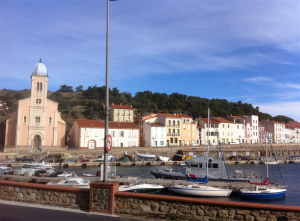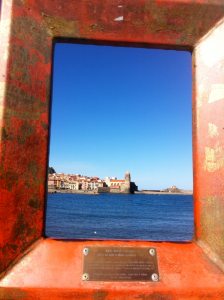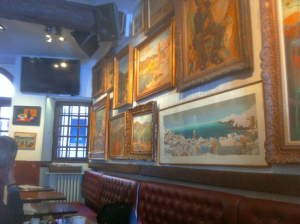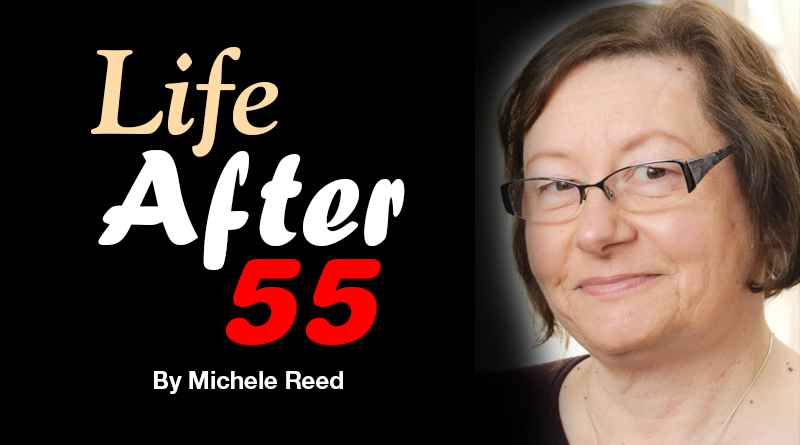Expats in France: A Long Tradition
By Michele Reed
michele@cny55.com
Photos by Bill Reed

We like to think about our adventures in France as if we were pioneers, but in fact we are merely heirs to a long tradition of English-speaking Francophiles who made France their permanent or part-time homes.
Paris in the 1920s was a mecca for all sorts of American artists and intellectuals, from writers Ernest Hemingway, Dorothy Parker, and Scott and Zelda Fitzgerald, to composer Cole Porter and the dancer Josephine Baker.
This “Lost Generation” found intellectual freedom, inspiration and camaraderie among creative people from all over the world, including Picasso (Spain), Chagall (Russia) and Modigliani (Italy), as they roamed the Left Bank and the heights of Montparnasse.
Along with the Americans, the British started paying peaceful visits to their historical enemies across the channel.
Our area in the south of France, Languedoc-Roussillon now called Occitanie, with its warm weather and abundant sunshine, had an especially strong draw for those from the gray and gloomy British Isles.
One such famous ex-pat, the arts and crafts architect Charles Rennie Mackintosh, left Scotland to retire to the south of France in the late 1920s with his wife, the artist Margaret MacDonald. We had fallen in love with Mackintosh’s work on a trip to Glasgow, so we followed in the footsteps that he and Margaret took while exploring this beautiful part of France.
We took the bus to Port Vendres, where the artistic couple made their home during the winters of 1925 to 1927. Toting along the book, “Monsieur Mackintosh,” which traces their journeys in Roussillon, we checked out the sites along the Mackintosh Trail. Before even alighting from the bus, we could see the original Hotel du Commerce, now the Banc Populaire, and the balcony of the corner rooms occupied by Charles and Margaret. Setting out on our trek, we stopped by the tourism office, which should always be the first stop in any new French town. Tourism is supported by the state, and maps, guidebooks and souvenirs abound, as well as friendly advice from staff who speak a multitude of languages.
From his balcony window at the Hotel du Commerce, Mackintosh had a perfect view of the port, Fort Mailly and the surrounding hills. We were able to stand just outside the original hotel and see renditions of his paintings juxtaposed with the scene as it is today. Not much has changed. Sure, the boats are bit more modern, and the yacht club now has berths in the harbor, but the masts of the boat we were standing near could be the ones in “Schooner Moored at Quayside,” and my husband Bill pointed out that the paving stones were the very ones depicted by Mackintosh. His “Port Vendres” (“Quai des Douanes”) shows the port exactly as it looks today, down to the reflections of the buildings in the water. You can see images of his work and learn about the trail at www.crmackintoshfrance.com/crmapp/index.html.

The smell of the sea permeated the air. We could see the stands where, in the morning, the fishing boats sell their wares. Restaurants proclaimed specials of poissons (fish) and fruits de mer (seafood). The sound of waves lapping the shore, the sight of masts bobbing in their swell and the feel of the sea wind on our faces, all brought me back to what must have fascinated Mackintosh here.
Fishing nets were piled on the piers, floats of cork on some (just like the samples we had fingered the week before at the Casa de l’Albera museum) and brightly colored plastic on others. Bill pointed out nets that must be for tiny anchovies, so fine they looked like nothing more than a mound of foam on the dock.
We snapped pictures all over town with our phones, basically unable to see what we were getting in the bright sunshine. It was only later, sitting in a café for a much-needed cup of coffee and a pastry while we waited for the bus, were we able to see that the brilliant colors of the sky and sea, and the pastel buildings lined up on the harbor, were perfectly reproduced in our own versions of Mackintosh’s art.
We returned a few weeks later, when the dome, which houses a museum dedicated to Mackintosh, opened for the season. We had plenty of time to explore the collection of Mackintosh prints and a timeline of his and Margaret’s visits to Roussillon. Videos show pictures of Port Vendres from the time of their visit accompanied by words from Mackintosh’s letters to Margaret, who had returned home early.
We followed the Mackintosh Trail to Collioure as well, where he had painted several landscapes.
The beautiful quality of light, the pink glow of the buildings and copper shimmer of the church tower transfixed many artists in addition to Mackintosh. Matisse was a frequent visitor, and he and his contemporaries founded the school of Fauvism, calling themselves The Fauves, literally “the wild ones.” They were known for their modern use of shapes and bright colors, no doubt inspired by the sea and land at Collioure. The Fauvism Trail leads you through the town, and you can look through empty frames to view the landscape that inspired each artist, accompanied by an image of the famous work created there.
Artists like to eat and drink, but the phrase, “starving artist” wasn’t coined without reason — they often lacked the means to pay. Sometimes they had to pay in kind. It happened so often at the Collioure bar Les Templiers (The Templars) that the owner amassed quite a collection of artwork from the likes of Matisse, Derain and Mackintosh, along with many lesser-known artists. For the price of a coffee, we got to sit in the tavern and drink in the remarkable paintings hanging behind the bar and lining the booths.

Like Paris in the ‘20s, Collioure attracted a variety of intellectuals and Les Templiers’ Livre d’Or, or guest book (literally the “book of gold”), features such illustrious names as Maurice Chevalier and the author of “Master and Commander,” Patrick O’Brien. They wrote snippets of prose and poetry, since they couldn’t donate a painting to line the walls.
Hemingway, Fitzgerald, Cole Porter and Mackintosh — we’re happy to follow in the footsteps of so many English and American expats who fell in love with France.
Michele Reed retired after a career spanning four decades in public relations, advertising, journalism and higher education. She now writes travel articles, book reviews, haiku poetry and fiction. Bill Reed retired after four decades in social services with the county of Oswego, and now works at travel photography and photojournalism, along with writing book reviews.

